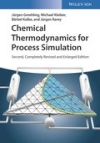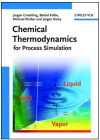Extended Data Bank (XDDB)
The XDDB has been originally created to store complex data which do not follow the strict rules the older DDB parts enforce and to store data which haven't been stored at all. If such data couldn't be converted into standard formats or do not fit into existing data banks DDBST stored such data simply in Excel files for future usage. With the introduction of the XDDB DDBST found a way to store such data unmodified and unconverted but accessible, retrievable, plottable, and exportable in the DDB main retrieval software. However, some restrictions apply because of the complexity of some data.
The XDDB contains a wide variety of data which is shown in the table below. Many of the new data types could be summarized under one label. For example, many properties give information about gas hydrates. This lead to the conclusion that some parts of the XDDB could be shown under such a label.
These XDDB derived data banks are currently:
- Gas hydrate data (GHD)
- Mixture viscosities (VIS)
- Mixture dielectric constants (MDEC)
- Electrical conductivities (ECND)
- Diffusion coefficients (DIF)
- Mixture flash points (MFLP)
- Mixture P-v-T data (MPVT)
- Mixture speeds of sound (MSOS)
- Mixture thermal conductivities (MTCN)
- Mixture surface tensions (MSFT)
These data banks are all extracts of (or views on) the XDDB and are not physically available. These partial data banks currently represent about 75 % of all data in the XDDB. The remaining 25 % are data for different properties or very complex data which couldn't be entered into the standard data banks. Although the majority of data in the XDDB is for mixtures some data for pure components are also stored. Most pure component properties, including, for example, viscosities, dielectric constants, electrical conductivities, flash points, etc., are stored in the pure component properties data base (PCP).
Latest News
Links:


